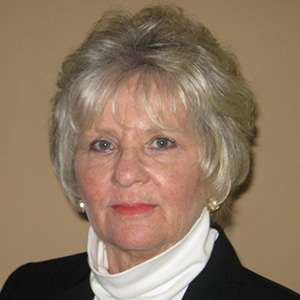
One of the long-running conversations in the contact center industry has been whether to have staff (agents and supervisors) work-from-home (WFH).
Proponents argue that WFH provides contact centers with access to a larger pool of agents who live outside of commuting distances of facilities, or who cannot commute for personal including disability reasons, along with lowered real estate costs and greater flexibility, particularly in the face of disasters.
But WFH use had been limited until the last reason struck hard with the COVID-19 pandemic, causing the ballooning of this practice out of sheer necessity in response to lockdowns to control the spread of this deadly, debilitating, highly contagious virus.
Yet how well has WFH really worked out? And can it be made successful now that the critical conditions that created the urgent need for it has, at this moment, fortunately passed?
Instead, should agents and supervisors now return to the office and if so, why?
Consultant Laura Sikorski has strong analysis-grounded views on this subject. We reached out to her to discuss them.
Q. What is your estimate of the percentage of agents WFH prior to the COVID-19 pandemic? When the lockdowns began what did it climb to?
My agent WFH crystal ball:
- 10% prior to the pandemic.
- 90% during lockdown.
- 10% essential contact center workers e.g., healthcare, 911, transportation.
In the beginning of the pandemic, businesses had no time to define/implement the best way to work remotely – they just had to get it done! The processes and workflows used were the same as working in an office.
Some companies deployed cloud, VPN for security and PCI compliance, and provided laptops. Others relied on the public internet, employee-owned PCs, printers, and cell phones: which affected how customers perceived their services.
I remember hearing from agents “my internet is slow, my computer just locked up,” and a lot of barking dogs and babies crying during interactions. We all accepted this as normal during the pandemic.
Q. Are you now seeing WFH return to pre-pandemic levels? Or, if not, and noting the concerns about new variants, what do you estimate the new percentage of WFH agents to be?
My post-pandemic white-collar workers NOT CONTACT CENTER staff crystal ball sees, of all full-time employees:
- 30% will be WFH.
- 30% going back to the office.
- 40% will be working to a hybrid model.
I think full WFH for contact centers will increase from 10% to 15%-20% only IF companies revamp all processes and workflows AND implement new cloud, security, and artificial intelligence (AI) technology: expensive yet required alternatives for full WFH success.
I do not see concerns with the new COVID variants. Humans are resilient and have learned not to panic. We listen, vaccinate, and adapt.
Q. What are, and rank, the top three forces having agents WFH?
Real estate financial savings. Sorry, this is all I see.
Q. What are, and rank, the top three forces driving contact centers to have their agents work in/return to the office?
1. High cost to install and maintain reliable and secure home connectivity as each agent is an “office.”
2. Need to reinforce companies’ brands to customers and cultures/missions to employees.
3. Face-to-face collaboration and community outreach programs need to be reinstated.
Q. What factors have led contact centers to have some agents WFH and others work in offices?
Prior to the pandemic, WFH contact centers were not a universally accepted alternative to satisfying customer and employee needs and fulfillment. It was technologically expensive, and culture and real estate commitments and face-to-face/water cooler collaboration were “in-the-way.”
There were companies, namely a couple of airlines, and one prominent hotel chain that openly embraced WFH prior to the pandemic. The model was full WFH; I do not know of any companies that entertained a hybrid home/office model.
It took many years of planning and pilot programs to develop, implement, and supply full WFH staff with reliable connectivity, processes, workflows for hiring, onboarding, training, coaching, performance evaluation, personal and business collaboration methodologies, and culture.
Companies that were full WFH had successfully integrated cloud technology, digital teaching and learning, and security systems for PCI compliance. Customers did not realize these early adopters were using remote workers.
Customer and employee satisfaction and expectations were realized without pain, and this was just a new way of conducting business.
What I do read about is that general white-collar remote workers want to stay remote. They do not like driving to work, sitting in traffic, gassing up/plugging in their cars, or paying for commuter rail tickets.
Time preservation and balancing work and personal obligations, along with improved well-being, were the key reasons for wanting to work remotely cited in the April 2020-September 2021 Gallup Panel.
A recent Business Insider January 2022 comment said “…employees are quitting instead of giving up working from home.”
Q. With the experience with WFH over the past two years what have been the chief lessons learned?
I feel WFH has caused us all to take a deep breath and to refocus our attention on customers, employees, and technology that will enable all interactions to be pleasant and profitable experiences.
It gave all of us time to examine if employees were happy, had the resources required at their fingertips, were empowered to make things happen, and fully understood that their primary responsibility was to make customers happy.
WFH has enabled companies to acknowledge and correct processes that were broken and analyze why customers were leaving for competitors.
Now is the time to bring contact center agents and management staff back to the office and assess operational strengths and weaknesses to implement innovation that will help management reach their goals.
Q. There has been much talk about the hybrid workforce. But is this a practical model for contact centers?
From what I hear and read, a hybrid work model is “1-3” days at home, “1-3 days in the office OR in a WeWork® communal model.”
I feel a hybrid model will be dependent on what technology and security is installed in the home to bypass the public internet and what financial losses would be incurred due to turnover/attrition.
A hybrid model may be the new white-collar “norm” BUT I really do not think a hybrid model should be deployed in the contact center. For me working in a contact center is HOME!
A successful contact center combines the best of human interaction, automation, and communications technology.
Let’s go back to the basics. The contact center is the most customer (internal and external)- focused area in an organization. It is where centralized conversation (voice, email, text, chat, video, etc.) takes place, the Voice of the Customer is amplified, and the data captured is significant.
A successful contact center combines the best of human interaction, automation, and communications technology. Staff needs the comradery with their fellow workers both personal and business, which directly translates to how they satisfy customers.
WFH means each employee is an “independent remote office” and I am not sure it would be in the best interest of employees and customers.
Workforce management and QA technology can be used for remote workers; however, seeing and acknowledging staff throughout their tenure far outweighs working alone from home.
IF you disagree, then you need to start now on how to go full WFH. It can be done, as discussed earlier.
Q. What do you see the contact center look like in the New Normal?
In my opinion, the new normal should be to bring staff back to the office!




